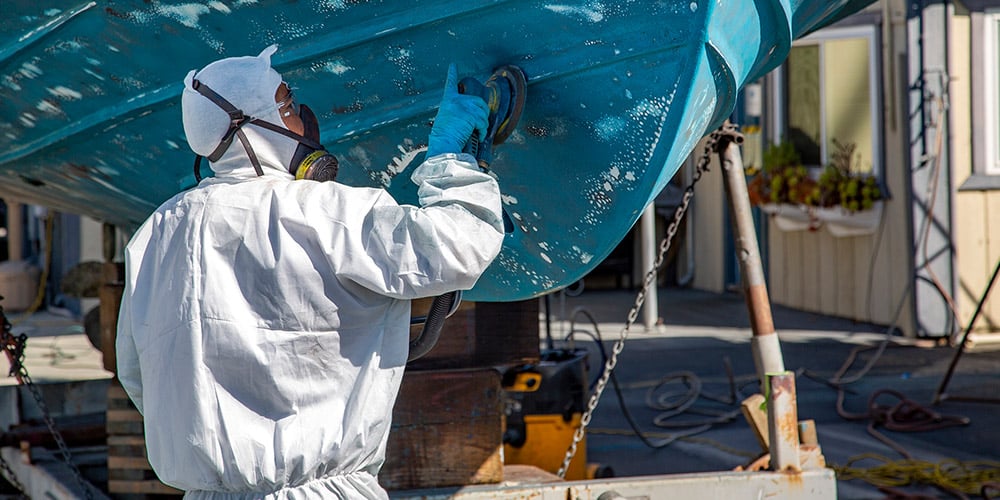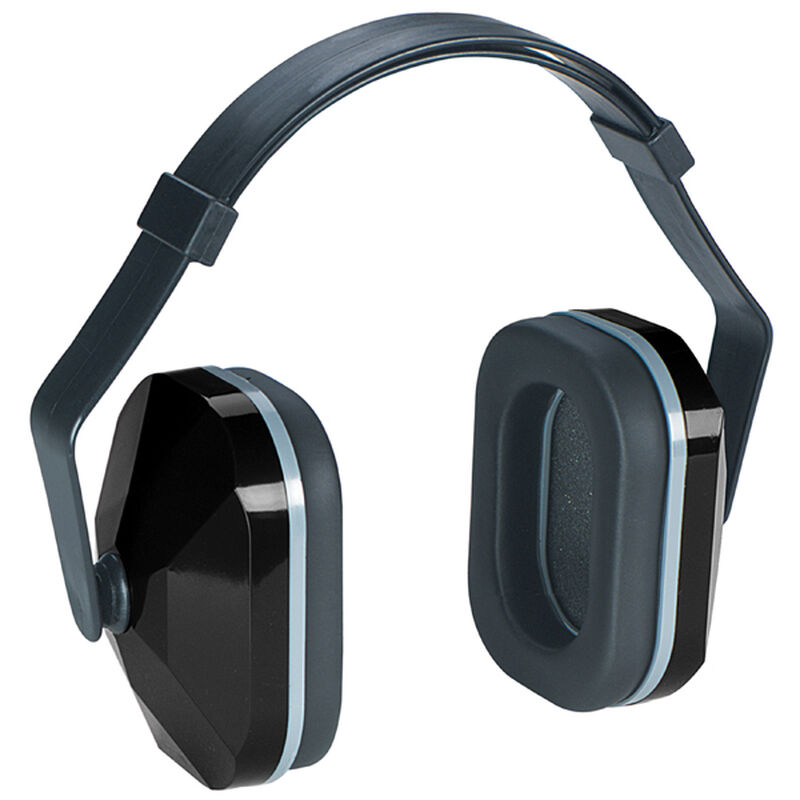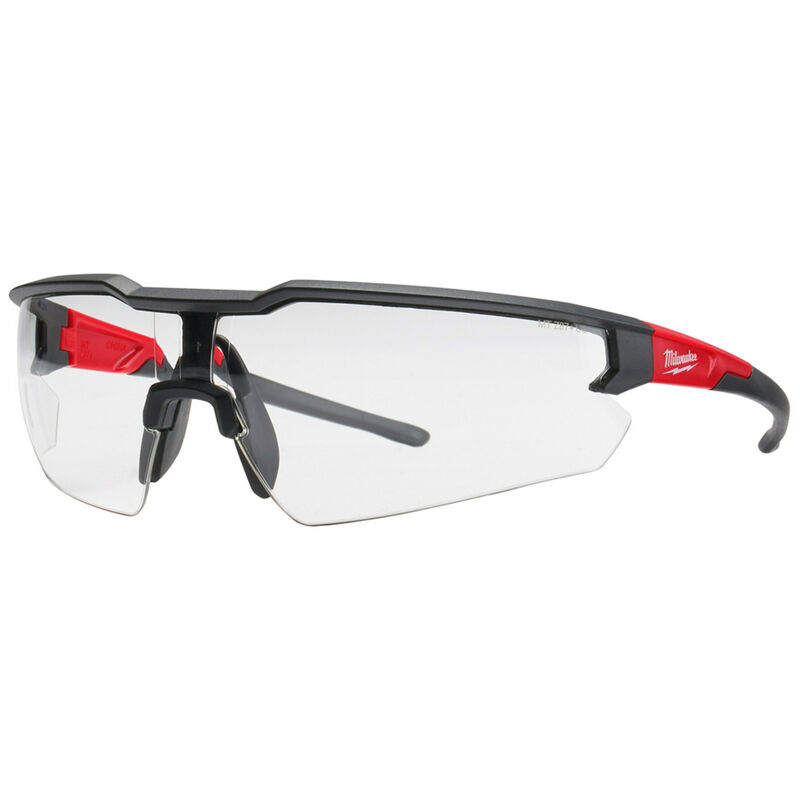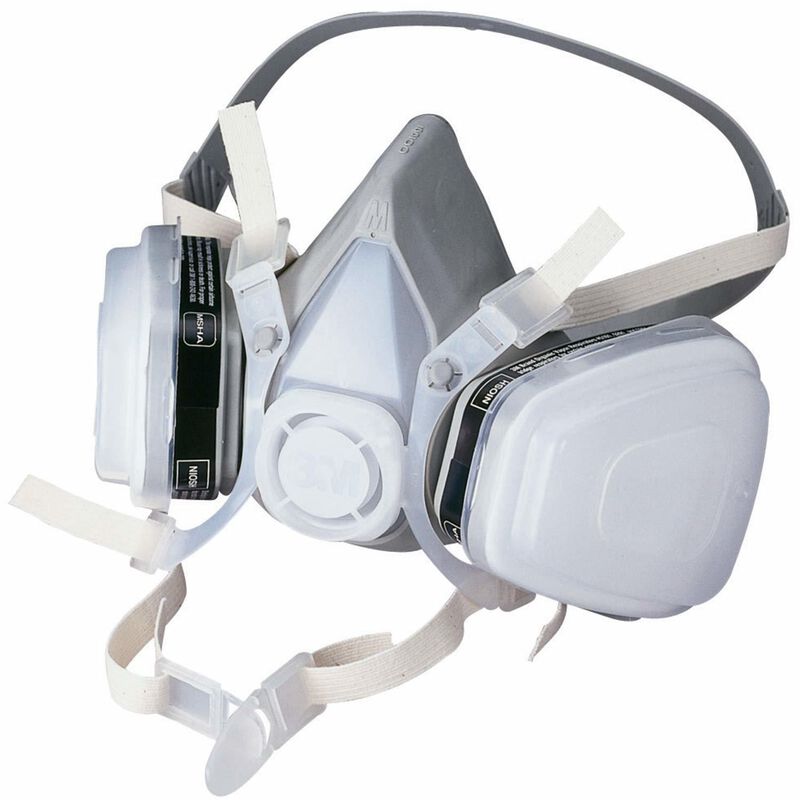
Hazards in the Boatyard
We hate to say this, but a boatyard or boatbuilding shop can be a nasty place to work. Most of the chemicals and maintenance products designed to withstand salt water, glue components together, and prevent marine life from growing on your hull are hazardous to humans. Loud noise, organic vapors, toxic particles and liquids all present dangers to the boat owner or boatshop worker. Fortunately, a range of personal safety gear has evolved to meet this challenge. Do-it-yourselfers—or anybody else who works on boats—should be familiar with this equipment and use it for the sake of their health. Briefly, here are some of the boat maintenance hazards and the proper equipment to prevent exposure and injury.
Noise Protection

Hearing protection is essential when using loud power tools.
Many boat maintenance operations require power tools, such as routers, which may produce screaming sounds louder than 100 decibels. Statistics from NIOSH indicate that prolonged exposure to noises above 85dB is likely to cause cumulative, irreversible hearing damage. The basic rule is that if you need to raise your voice to speak to someone arms-length away from you, you should wear hearing protection. Earplugs, either of the moldable single-use variety, or foam plugs, are unobtrusive. Earmuffs are more convenient to put on for short-duration protection, can be combined with earplugs for even more protection, but may not seal completely for wearers with longer hair, glasses or safety glasses.
Eye Protection

Always wear safety glasses when sanding or grinding. Safety goggles provide extra protection from fine dust and splashing liquids.
Sanding, grinding or chipping away wood, paint or fiberglass, or spraying and mixing paint, varnish or other chemicals all create hazards to the eyes. Safety glasses provide security from chips and flying particles, as well as minimum quantities of dust. If you are operating an electric saw, scraping paint overhead or performing other jobs that may throw out small hazards, safety glasses will give minimal protection. Goggles provide a higher level of protection from fine dust and, depending on the type, from liquids. Perforated goggles do not protect against splashing liquids. Splash/Impact Safety Goggles are the best choice for protection while spraying paint or other chemicals. A full face shield provides secondary impact protection, but should be worn with goggles when fine dust or liquids are present.
Dust Particles and Liquids

A dust mask or respirator is essential when grinding or sanding. If you're painting or applying resins or solvents, make sure your mask protects against organic vapors.
Particles and dust that can be inhaled require use of a simple comfort mask, also called a dust mask or a respirator. Use the following information from 3M as a guide for a particle mask (not for hazardous or toxic gasses or vapors):
N-Series Filters: These filters are used for any solid or liquid airborne particulate hazard that doesn’t contain oils (which can coat the fibers of these filters and reduce their effectiveness). A rating of N95 means that standardized U.S. government tests indicate at least a 95% filtering efficiency; N100 indicates an efficiency of 99.97% using the same test. Use these filters until breathing becomes difficult or they are soiled or damaged
R-Series Filters: These filters are used for any solid or liquid airborne particulate hazard—including oil-based aerosols. R95 indicates filtering efficiency of better than 95%. Use these filters for a maximum total time of eight hours (including intermittent usage) and then replace.
P-Series Filters: These filters are used for any solid or liquid airborne particulate hazard—including oil-based aerosols. P95 indicates filtering efficiency of better than 95%. P100 indicates an efficiency of 99.97%. Replace them after 40 hours or 30 days of total use (whichever occurs first) if you use them in an environment where oil aerosols are present; otherwise (if no oil is present) replace them when breathing becomes difficult or they are soiled or damaged.
Organic Vapors
Organic vapors produced by painting, or applying resins or solvents, require organic vapor protection, usually with a cartridge respirator. Often (but not always) the best rule is, “if you can smell it, it can hurt you.” Select the correct type for the chemicals you are applying and the type of application. Be sure the equipment is properly maintained and the filters are replaced regularly. Some wearers with facial hair may not get an adequate seal from a respirator, and may need to wear a hood that covers the entire head. Those who regularly apply products producing organic vapors, such as Linear Polyurethanes, should consider a positive pressure system, with air supplied from outside the area of contamination. Finally, the best approach is to choose a less-toxic product whenever possible. A one-part polyurethane enamel is often a better choice than LP for the do-it-yourself boat owner. For more info call 3M Tech Support: 1-800-243-4630 (Safety), www.3M.com/occsafety
Skin Protection
Gloves, head socks and boatyard coveralls protect you from corrosive chemicals, those that can be absorbed through the skin, or from coating you or your clothing with paint, paint remover or resin. Take care to cover yourself, and avoid expensive, dangerous or embarrassing exposures. Work deliberately, keep the work area clean, and stay safe.